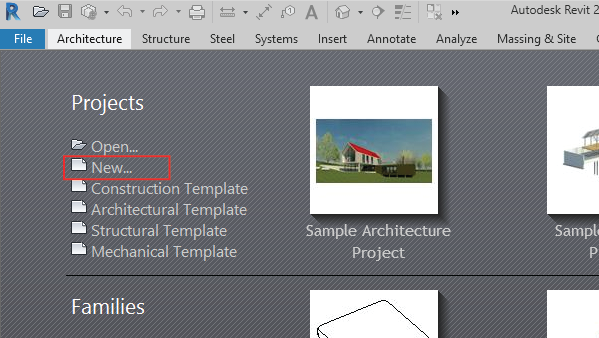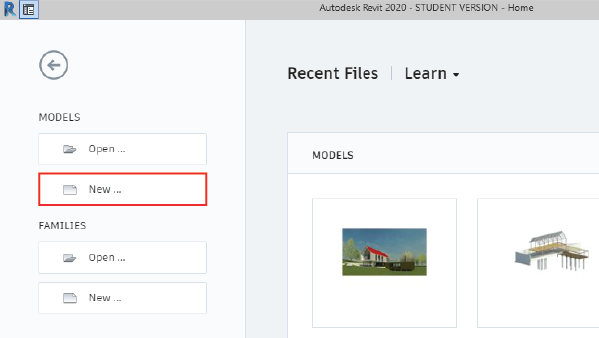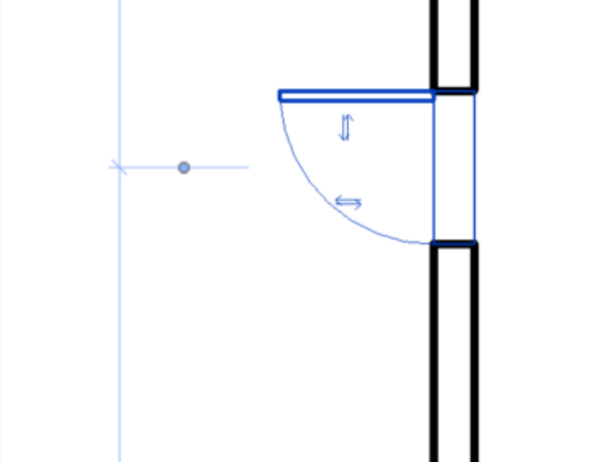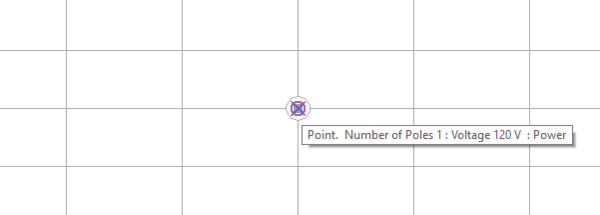Introduction to Revit
Objective
The first experimental objective of this lab is to understand the fundamentals of CAD and 3D printing by designing an NYU logo keychain in Autodesk Fusion 360 and preparing it for 3D printing in Cura. The second objective is to modify a poorly-designed part using Autodesk Fusion 360 in a competition setting. The competition will be ranked based on a design ratio consisting of a safety factor and overall volume.
Overview
Your design firm has been assigned by Mayor Bill de Blasio to solve a pressing problem in the Big Apple. There are only about one million studio and one-bedroom apartments available for 1.8 million one and two-person households in New York City. In order to meet high demand, new apartments have to be created for New York residents and college students. This apartment should be furnished. It must have adequate lighting (at least one window) and space. Design an apartment layout with the following specifications:
- A 350-400 square foot floor plan layout of the entire apartment
- A bathroom with the appropriate furnishings
- A kitchen with the appropriate furnishings
- A bedroom with a bed, a table, and a desk
- An electrical plan for the entire apartment
- Extra credit: create a realistic rendering and 3D walkthrough of the apartment
Design Consideration
- How well was space maximized in this very small apartment?
- Was the necessary storage added?
- Is the layout coherent and creative?
- Could a person comfortably live in this apartment?
Procedure
- Sketch a solution to the prompt and indicate the square footage. Have the sketch approved by a TA.
- Open Revit. Do NOT use Revit 2021 Select "New", then select "Architectural Template" (Figure 1).
- There are four major sections used to create and modify the building in Revit. The Quick Access Toolbar is in red, the project ribbon in yellow, the Properties panel in green, and the Project Browser panel in blue (Figure 26). If any of the sections are accidentally removed from view, they can be reinserted by going to View > User Interface (rightmost icon) in the ribbon. File:Lab 4 Figure 24.PNGFigure 26: Revit Interface
- In the ribbon, go to the Manage tab and select Project Units (or type UN) under the Settings section (Figure 27). Click the Length value and select "Feet and fractional inches” with rounding to the nearest 1/32”. Click OK.
- Ensure the Properties panel is open by right clicking anywhere and clicking on Properties.
- Ensure the Level 1 floor plan is selected in the Project Browser on the left side of the window by double clicking on Level 1 under Floor Plans.
- Create the exterior walls by going to the Architecture tab in the ribbon and selecting Wall (Figure 28).
- Make sure the walls are 8” thick and 10’ high. The thickness and height of the walls can be changed in the Properties panel (Figure 29). File:Lab 4 Figure 27.PNGFigure 29: Wall Properties
- The Base Constraint changes where the bottom of the wall is placed in reference to the different levels.
- The Base Offset adjusts the height difference between the level and the base of the wall.
- The Top Constraint determines where the top of the wall is located. If the top constraint is selected to be Unconnected, then the Unconnected Height can be used to determine a numerical value for the height of the wall.
- Insert the interior walls (6” thick and 10’ high) for the bathroom and any other walls if desired. The type of wall (thickness) can be changed in the drop-down menu in the Properties panel (Figure 30). File:Lab 4 Figure 28.PNGFigure 30: Changing Wall Types
- Insert the floor by using the Floor tool in the Architecture tab of the ribbon and selecting the boundary where the floor will be placed. The boundary can be made by selecting the walls or by creating individual lines from the Draw section of the Modify | Create Floor Boundary tab in the ribbon (Figure 31). To complete the floor, click on the green check mark in the ribbon. File:Lab 4 Figure 29.PNGFigure 31: Create Floor Boundary
- Insert doors and windows in the apartment.
- Go to Insert > Load Family > Doors/Windows for a wide range of doors and windows (Figure 32). Doors should be 3’ wide and 7’ tall (No specifications for windows).
- File:Lab 4 Figure 30.PNGFigure 32: Load Family Tool
- Go back to the Architecture tab of the ribbon and select Door/Window (Figure 33) and select the loaded door/window from the Properties panel. They can then be placed by clicking in the floor plan.
- File:Lab 4 Figure 31.PNGFigure 33: Door and Window Tools
- Once placed, the direction of the doors and windows can be changed with the arrow couples (Figure 34).
- Go to Insert > Load Family > Doors/Windows for a wide range of doors and windows (Figure 32). Doors should be 3’ wide and 7’ tall (No specifications for windows).
- When loading furniture or appliances, go to the Architecture tab of the ribbon and select Component > Place a Component (or type CM).
- Furniture and appliances can be added with the Load Family tool like doors and windows. Only the furniture and appliances from the specifications must be in the floor plan including the entire bathroom. Table 2 shows the folder paths for all the files needed in this lab. In the dialog that appears, the material in the Override column should be changed.
Table 2: File Paths for Required Components Component File Path Sink US Imperial > Plumbing > MEP > Fixtures > Sinks Toilet US Imperial > Plumbing > MEP > Fixtures > Water Closets Shower US Imperial > Plumbing > MEP > Fixtures > Shower Bed US Imperial > Furniture > Beds Kitchenette US Imperial > Special Equipment > Domestic Table US Imperial > Furniture > Tables Desk US Imperial > Furniture > Tables Door US Imperial > Door > Residential
- Add furniture to the floor plan. The components can be rotated before being placed by pressing the space bar.
- Once the families are loaded, they can be placed by going to Component > Place a Component in the Architecture tab of the ribbon and by switching in the Properties tab (Figure 35). File:Lab 4 Figure 33.PNGFigure 35: Changing Component Families
- To insert a ceiling or ceiling appliances, the ceiling plan in the Project Browser must be selected. Go to Level 1 in the Ceiling Plans (Figure 36). File:Lab 4 Figure 34.PNGFigure 36: Ceiling Plans
- Use the Ceiling tool in the Architecture tab of the ribbon to create the ceiling (Figure 37). File:Lab 4 Figure 35.PNGFigure 37: Ceiling Tool
- The ceiling is created with the same method as the floor, by selecting a boundary where the ceiling will be placed. The individual walls can be selected to create the boundary by creating a Sketch Ceiling, or entire areas can be selected for the boundary using the Automatic Ceiling (Figure 38). Don’t forget to complete the ceiling by clicking the green check mark in the ribbon. File:Lab 4 Figure 36.PNGFigure 38: Sketch Ceiling and Automatic Ceiling Tools
- Navigate back to the Level 1 floor plan in the Project Browser. Insert the electrical appliances in the apartment with the Component tool in the Architecture tab of the ribbon and using the file paths provided in Table 3.
Table 3: File Paths for Required Electrical Components Component File Path Light Switch US Imperial > Electrical > MEP > Electric Power > Terminals > Lighting Switches Ceiling Light US Imperial > Lighting > MEP > Internal
- For ceiling lights, go back to the Level 1 ceiling plan in the Project Browser. Select the lights that are to be placed with the Component tool in the Architecture tab of the ribbon. Once the lighting fixture is selected, select Place on Face in the Placement section of the Modify | Place Component tab of the ribbon to freely place the lights on the ceiling (Figure 39). File:Lab 4 Figure 37.PNGFigure 39: Place on Face Tool
- Go back to the Level 1 floor plan in the Project Browser. Notice that the light fixtures on the ceiling cannot be seen in the floor plan. They must be made visible to create the electrical wiring.
- In the Properties panel, go to the Underlay subtab and change the Range: Base Level to Level 1 and Underlay Orientation to Look up (Figure 40). This will allow the ability to “look up” at the ceiling and see the lighting fixtures on the ceiling in the floor plan.
- Connect the lights and switches with electrical wiring. Navigate to the Systems tab in the toolbar and select the Wire tool (Figure 41).
- Connect the lights to the switches. Make sure the lights and switches are properly connected to the wire by hovering over the fixture and seeing a pink circle with an X (Figure 42).
- In the Quick Access Toolbar, select Default 3D View (small house icon) to view the project in 3D (Figure 43). File:Lab 4 Figure 41.PNGFigure 43: Default 3D View Tool
- Save the file as an Autodesk Revit File (RVT) file. Take screenshots of the project and submit the RVT file on the EG1003 website by 11:59 PM the night before the next lab.
- To receive extra credit, make a 3D rendering and walkthrough video of your apartment design. Use Google, online Revit forums, and the Revit How-To to complete this. To receive the extra credit, the rendering and walkthrough video must be completed before the end of lab and also must be included in the team presentation.
Assignment
A GCODE file must be submitted to the EG1003 website by 11:59 PM the night before your next lab. There is no individual lab report or team presentation for this part of Lab 1.
| ||||||||







